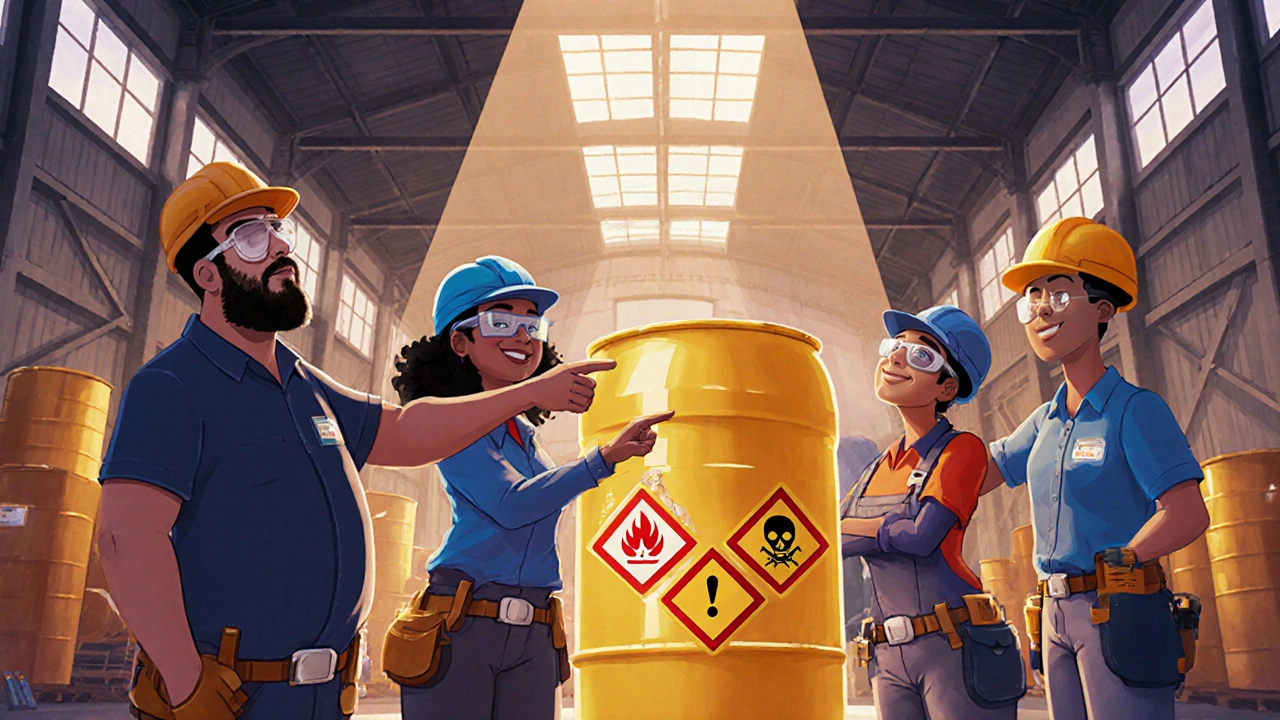Hazard Communication: What It Is and Why It Matters in Workplace Training
When you hear hazard communication, the system used to inform workers about dangerous substances in the workplace. Also known as HazCom, it's not just about labels and safety sheets—it's the backbone of keeping people safe where they work. Every time someone opens a container of cleaner, handles industrial chemicals, or uses solvents in a workshop, hazard communication is the invisible guide telling them what’s inside, how it can hurt them, and how to protect themselves.
This system isn’t optional. In the U.S., it’s enforced by OSHA under the Hazard Communication Standard, and similar rules exist worldwide. It connects directly to OSHA, the federal agency that sets and enforces workplace safety rules, and relies on three core pieces: clear labels on containers, accessible safety data sheets (SDS), and training that actually sticks. Without any one of these, the system breaks. And when it breaks, people get hurt. Real-world examples? A warehouse worker mistaking a chemical for water. A mechanic inhaling fumes because no one explained the risks. These aren’t hypotheticals—they happen because hazard communication was treated like a checkbox, not a lifeline.
What’s interesting is how hazard communication overlaps with the kind of training you see in online courses. Think about safety training, structured learning that teaches workers how to handle risks. It’s not just about reading a manual. It’s about making sure people remember what they learn. That’s why the best programs use clear visuals, real-life scenarios, and repetition—not just PDFs buried in a folder. And it’s why posts on things like micro-learning, interactive puzzles, and office hours formats matter here. You don’t train people on hazard communication by handing them a booklet. You train them by making the information stick, by turning fear into awareness, and by giving them tools they can use every day.
It’s also tied to chemical safety, the practice of managing and handling dangerous substances to prevent harm. But chemical safety doesn’t exist in a vacuum. It needs communication. It needs culture. It needs people who feel empowered to ask questions, not just follow rules. That’s why the most effective safety programs don’t just list hazards—they build trust. They make workers part of the solution, not just the audience.
What you’ll find in the posts below isn’t a list of OSHA regulations. It’s the real-world work behind making safety training work: how to design it so people pay attention, how to test it so it actually changes behavior, and how to make sure no one has to guess what’s in a bottle. If you’re building training programs, managing teams, or just trying to understand why safety matters, this collection gives you the practical side of hazard communication—not the paperwork, but the people behind it.

Safety Training and Hazard Communication for Workplaces: What You Need to Know
Learn how effective safety training and hazard communication prevent workplace injuries. Understand OSHA requirements, GHS labels, SDS access, and real strategies that actually work on the job.